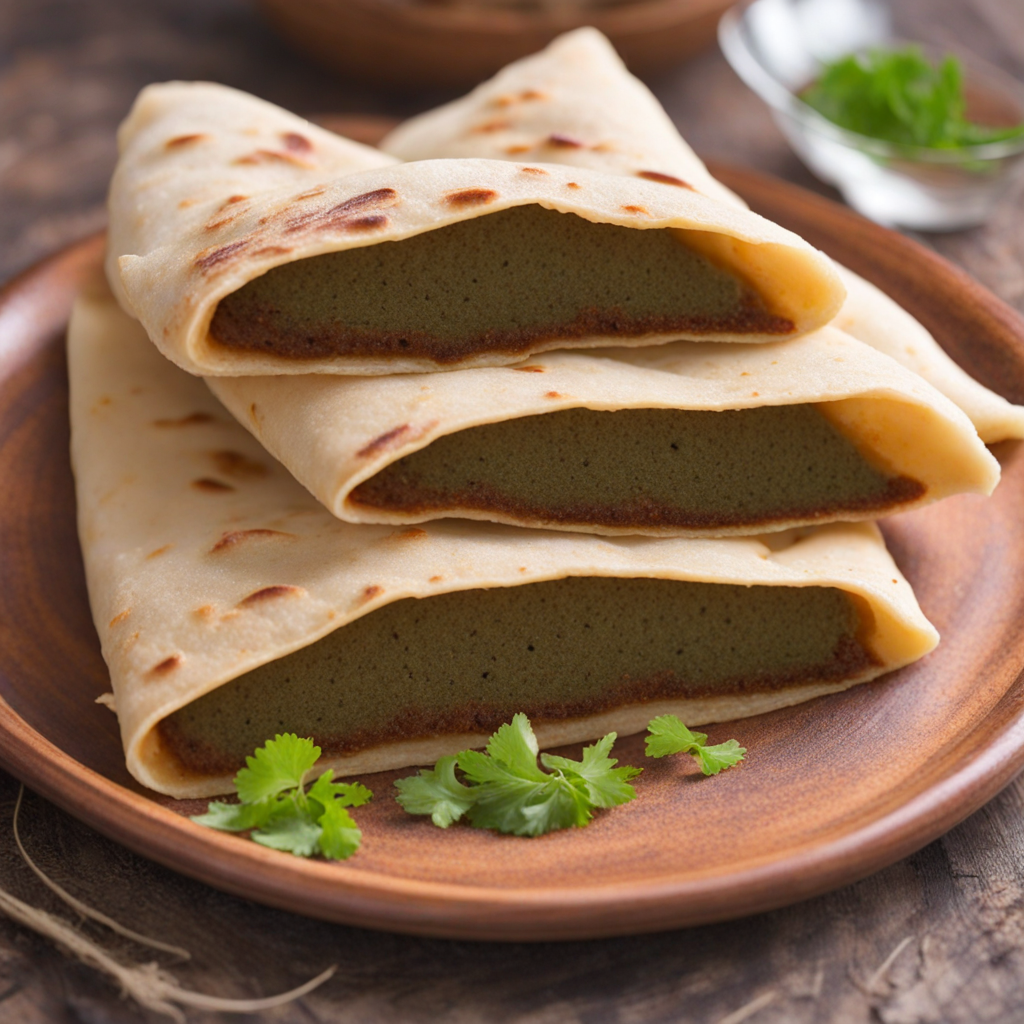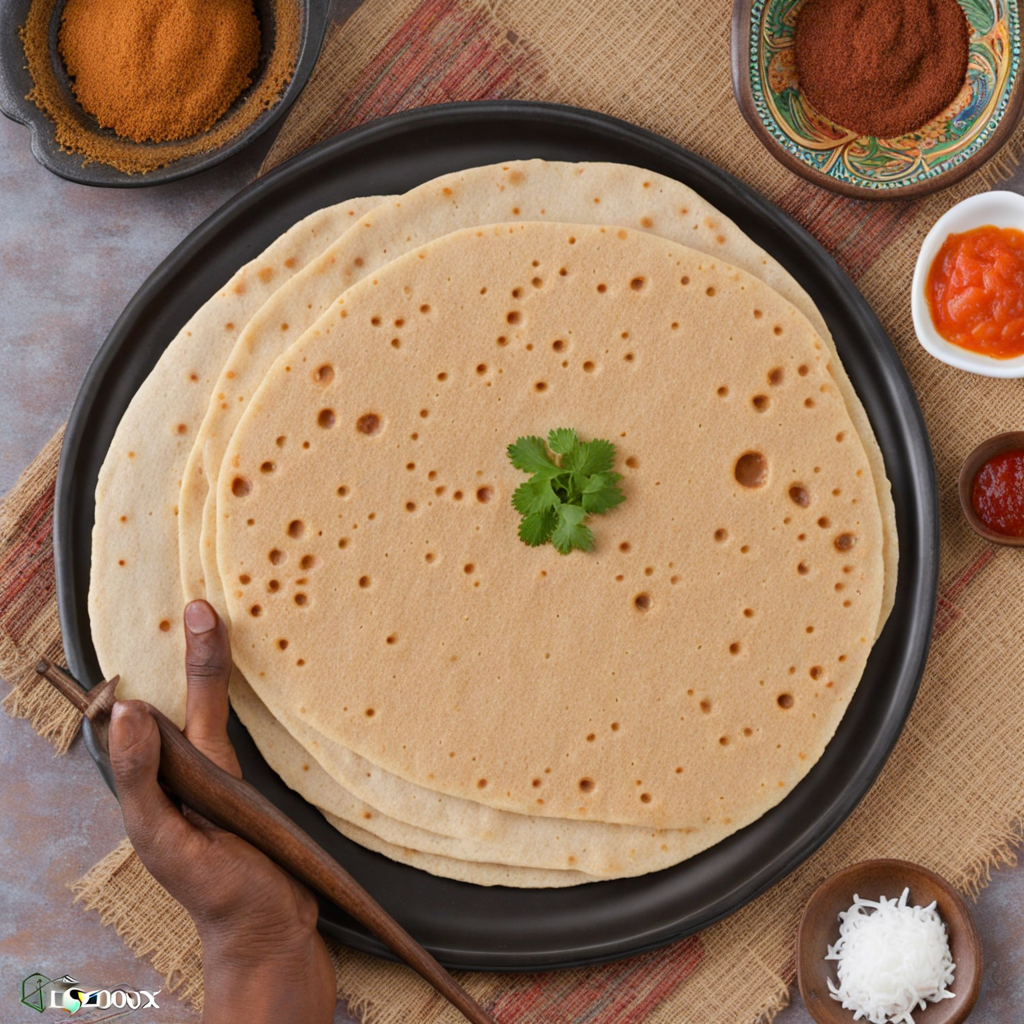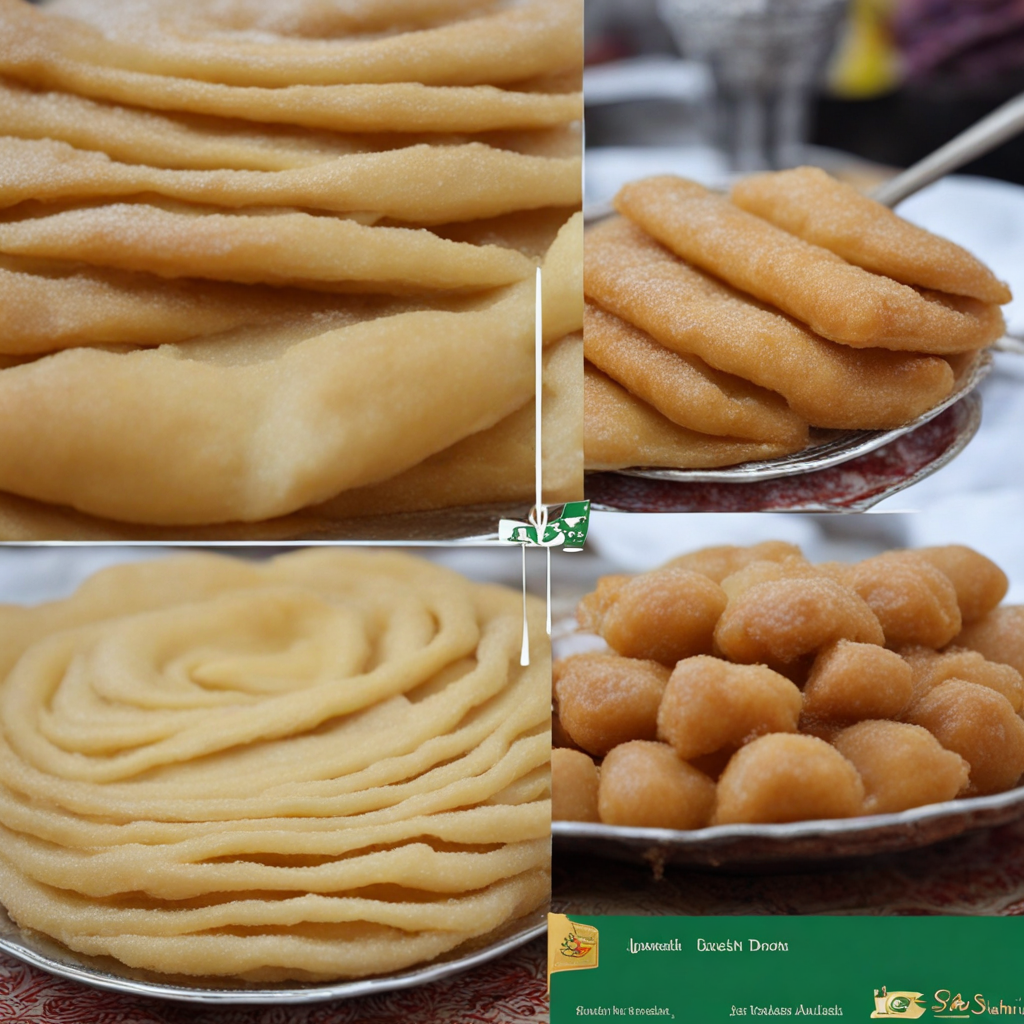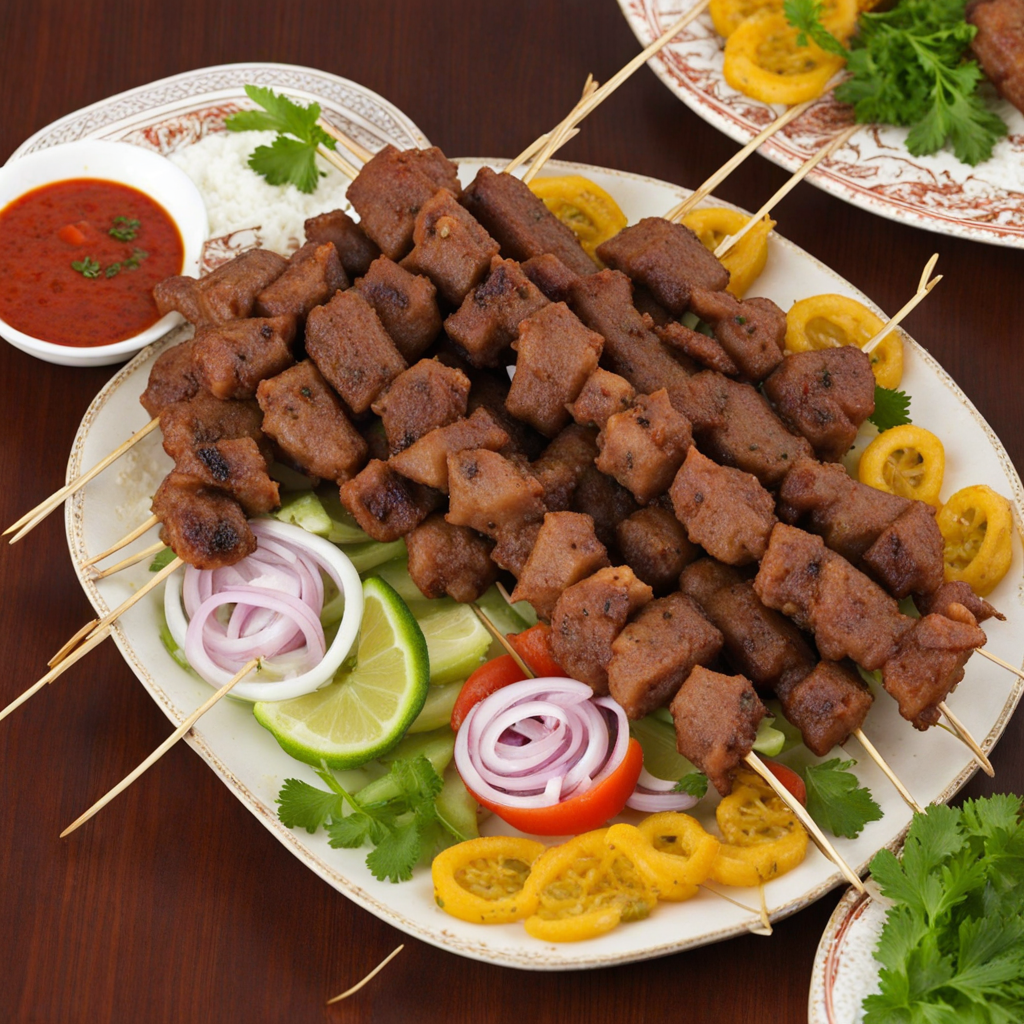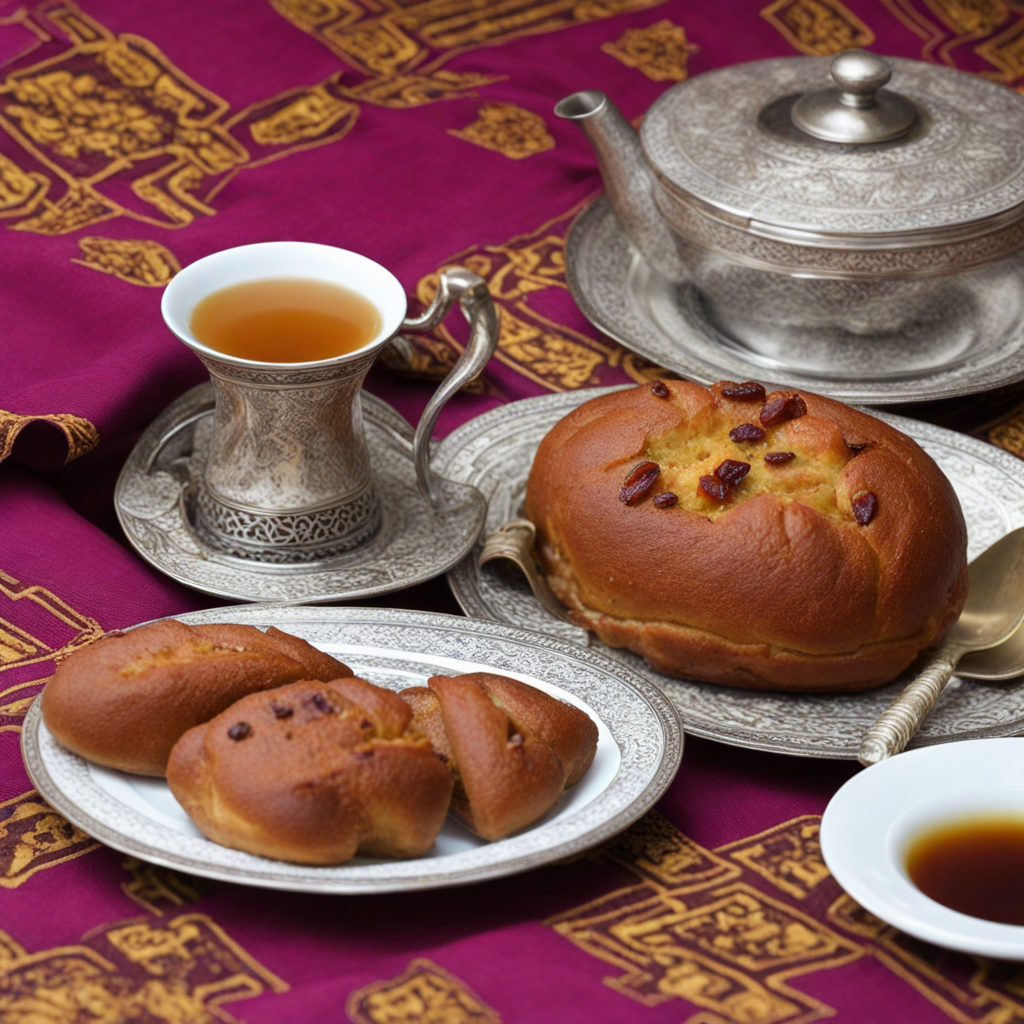Laxoox
Laxoox is a traditional Djiboutian flatbread, characterized by its unique texture and delightful flavors. This versatile bread is made from a simple mixture of flour, water, and yeast, which is then allowed to ferment, giving it a slightly tangy taste. The dough is cooked on a hot griddle, resulting in a soft, spongy interior with a slightly crispy exterior. Its golden-brown color and round shape make it visually appealing, while its subtle flavor profile complements a variety of dishes, making it an essential staple in Djiboutian cuisine. Laxoox is often enjoyed as an accompaniment to stews and sauces, absorbing the rich flavors of the dishes it is served with. It can be paired with spicy lentils, savory meats, or even sweet toppings, showcasing its versatility. The bread is typically torn apart by hand, creating a communal dining experience that is central to Djiboutian culture. Its soft texture makes it perfect for scooping up food, making each bite a delicious blend of flavors and textures. Beyond its culinary uses, Laxoox holds cultural significance in Djibouti, symbolizing hospitality and togetherness. Preparing Laxoox is often a communal activity, where family and friends gather to share in the experience of making and enjoying the bread together. As one takes a bite of Laxoox, they not only experience the delightful taste but also a connection to the rich traditions and warmth of Djiboutian hospitality.
How It Became This Dish
The History of Lahooh: A Culinary Gem from Djibouti #### Origins and Cultural Roots Lahooh, often referred to as "lahuh" or "laho," is a traditional flatbread that holds a revered place in the culinary landscape of Djibouti and the broader Horn of Africa region. Its history is as rich and layered as the bread itself, with roots tracing back to the ancient trade routes that once crisscrossed the area, connecting Africa, the Middle East, and beyond. The origins of lahooh can be linked to the interactions between various cultures, particularly the Somali and Arab influences that have shaped the identity of Djibouti over centuries. The name "lahooh" is believed to derive from the Arabic word "lahuh," which means "to cover" or "to wrap." This etymology reflects the bread's versatility, as it is often used to wrap around various fillings or serve as a base for stews and sauces. The preparation of lahooh includes a unique fermentation process that gives it a spongy texture and distinctive, slightly sour flavor—a characteristic that is reminiscent of other fermented breads around the world, such as Ethiopian injera. #### Culinary Significance In Djibouti, lahooh is more than just a staple food; it embodies cultural significance and communal identity. It is often served during social gatherings, special occasions, and family meals, symbolizing hospitality and generosity. The bread is typically enjoyed with a variety of accompaniments, including spicy stews, lentils, or a mix of vegetables and meat, allowing it to play a central role in the traditional Djiboutian diet. Lahooh's preparation is a communal activity, often involving the participation of family members, which strengthens social bonds and fosters a sense of unity. The process of making lahooh involves mixing flour (usually a combination of wheat and sorghum), water, and a natural leavening agent, allowing the mixture to ferment. This fermentation process not only contributes to the bread's unique flavor but also enhances its nutritional value, making it a wholesome part of the diet. #### Development Over Time The evolution of lahooh reflects the broader historical and cultural shifts in Djibouti. The country, strategically located at the mouth of the Red Sea and the Bab el Mandeb Strait, has long been a melting pot of different cultures and influences. The arrival of Arab traders and the subsequent spread of Islam in the region in the 7th century had a profound impact on local culinary practices, including the introduction of various grains and cooking techniques. Throughout the centuries, lahooh has adapted to the changing tastes and ingredients available in Djibouti. While traditionally made from a blend of wheat and sorghum, modern variations may use other flours, such as corn or millet, reflecting the influence of globalization and the availability of different grains. Additionally, the rise of urbanization has led to the emergence of commercial bakeries that produce lahooh on a larger scale, making it accessible to a wider population. However, the traditional method of making lahooh at home remains a cherished practice among many families, serving as a link to their heritage. #### Comparisons with Other Flatbreads Lahooh shares similarities with other flatbreads found in the Horn of Africa, particularly Ethiopian injera and Yemeni mulawah. While each of these breads has its own unique preparation methods and cultural significance, they all highlight the importance of fermentation and communal eating in their respective cultures. Injera, for example, is made from teff flour and is known for its spongy texture, which allows it to absorb stews and sauces. Similarly, mulawah is a flaky bread that is often enjoyed with honey or savory dishes in Yemen. Despite these similarities, lahooh maintains its distinct identity, characterized by its unique flavor profile and preparation method. The fermentation process used in making lahooh results in a lighter, airier bread compared to the denser injera, making it a versatile accompaniment to a range of dishes. #### Contemporary Relevance In recent years, lahooh has garnered attention beyond Djibouti, with increasing interest from food enthusiasts and chefs around the world. The global fascination with authentic and traditional foods has led to a revival of interest in lahooh, and it is now being featured in various culinary settings, from upscale restaurants to food festivals celebrating East African cuisine. Moreover, the rise of social media has played a significant role in promoting lahooh and other traditional Djiboutian dishes, allowing home cooks and chefs to share their recipes and cultural narratives. This digital engagement has not only helped preserve the culinary heritage of Djibouti but has also fostered a sense of pride among Djiboutians, both at home and in the diaspora. #### Conclusion Lahooh is more than just a flatbread; it is a testament to the rich culinary heritage of Djibouti and the intermingling of cultures that have shaped the region over centuries. Its origins, steeped in history, reflect a journey of trade, migration, and cultural exchange, while its ongoing evolution showcases the adaptability of traditional foods in a modern world. As Djibouti continues to navigate the complexities of globalization, the significance of lahooh remains steadfast, serving as a beloved symbol of community, hospitality, and resilience. Through its unique flavor and cultural importance, lahooh not only nourishes the body but also connects generations, preserving the stories and traditions that define Djiboutian identity. Whether enjoyed at a family gathering or featured on a global stage, lahooh will undoubtedly continue to hold a special place in the hearts and kitchens of many for years to come.
You may like
Discover local flavors from Djibouti


